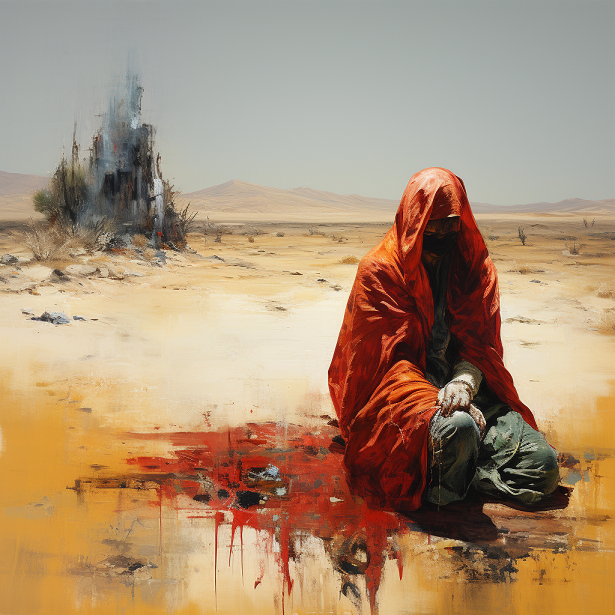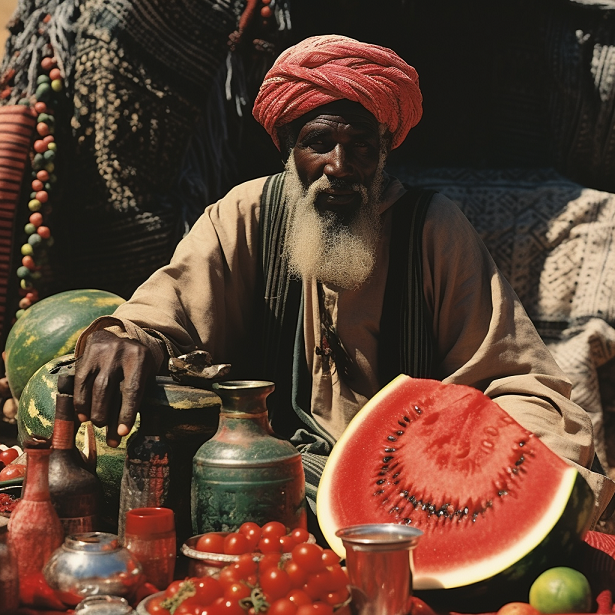In the vast expanse of the Arabian desert during the 19th century, John Keane embarked on a transformative journey as part of a colossal pilgrimage caravan en route from Mecca to Medina. This caravan, comprising hundreds of camels and pilgrims, traversed the arduous terrain, marking a pilgrimage of profound spiritual significance. As the caravan progressed, reaching the pivotal way station of Ragbah, situated halfway on the route, Keane’s odyssey took an unexpected turn. It was in the midst of this desert landscape, characterised by shimmering sands and nomadic Bedouin communities, that an unforeseen altercation unfolded, leaving John Keane wounded and setting the stage for a remarkable tale of survival and resilience.
Englishishtoo
Amidst the pilgrimage, the morning routine stood out with the peculiar dish known as “Englishishtoo” gracing the breakfast table. Although this dish held little appeal for the majority of the caravan, Keane secretly harboured a preference for it. However, he was reluctant to openly declare such as this might raise suspicion about his peculiar culinary taste, since it was not known to his travelling companions that he was in fact an Englishman. Notably, even his wealthy Indian patron, unimpressed by “Englishishtoo,” yielded to its preparation to stay in line with the culinary trends recently imported from India. The dish, having gained popularity there, held a novel yet unappetizing status among the diverse pilgrims. Despite the general aversion towards “Englishishtoo,” Keane, in a subtle display of ingenuity, managed to secure a generous share for himself without openly declaring his fondness. By absenting himself until after the meal was finished, he later approached the cook asking what was available to eat, knowing well that there would be plenty of “Englishishtoo” because his companions, not liking it, would never eat more than the minimum. Feigning displeasure, he nonetheless helped himself to a hearty portion thus achieving his goal without raising suspicion.
Unexpected Turn of Events
Amidst the solitude of the desert, an unexpected turn awaited John Keane during his breakfast ritual. As he savoured his preferred “Englishishtoo,” an old Bedouin figure appeared nearby, engrossed in a rather unsettling surgical procedure on a hapless camel. The scene unfolded with an air of discomfort, casting a peculiar atmosphere over the serene desert morning. Keane, immersed in his meal, suddenly became aware of the Bedouin’s proximity. In a disconcerting twist, before Keane could react or comprehend the Bedouin’s intentions, the old figure abruptly thrust his hand into Keane’s food. A jolt of surprise and confusion rippled through Keane’s consciousness. In a frantic attempt to prevent the intrusion, Keane found himself unintentionally entangled with a narrow steel instrument that resulted in a sudden, sharp injury to his thigh. The tranquil desert breakfast transformed into a chaotic sequence of events, setting the stage for an unforeseen and dramatic chapter in Keane’s desert journey.
Critical Situation
The tranquillity of the desert morning shattered as John Keane grappled with the consequences of the unexpected injury to his thigh. A surge of pain and shock coursed through him, signalling the severity of the wound. In the ensuing chaos, Keane, weakened by the sudden turn of events, attempted to fend off the Bedouin whose intrusion had resulted in the injury. A scalding stew, unintended yet providential, met the Bedouin, prompting him to retreat with vehement exclamations. Despite the Bedouin’s departure, Keane found himself in a state of frustration and disappointment, exacerbated by the realisation that he was wounded and vulnerable in the unforgiving desert terrain. Contemplating the possibility of succumbing to his injuries, Keane grappled with the stark reality of potential demise in the vast, isolated landscape. The critical situation unfolded, casting a shadow over Keane’s journey and setting the stage for a test of endurance in the unforgiving wilderness.
Rescue and Recovery
In the throes of adversity, John Keane’s journey took an unexpected twist, leading to a precarious situation in the heart of the desert. Following the injury, Keane, grappling with the pain, eventually succumbed to unconsciousness. However, a ray of hope emerged as he later regained consciousness, greeted by the refreshing taste of watermelon administered by his vigilant Bedouin companion. Demonstrating unwavering care, he assumed the role of a dedicated nurse during Keane’s arduous recovery. Providing both physical and emotional support, the “warrior” became a lifeline in the unforgiving desert environment.

Amidst this journey of resilience, another key figure, Shaykh Bo’sen, played a pivotal role in shaping Keane’s fate. Recognizing the severity of Keane’s condition, Shaykh embarked on a swift mission to fetch a local healer. This healer, armed with local knowledge and unconventional remedies, became the beacon of hope for Keane’s recovery. Shaykh’s proactive efforts not only secured medical assistance but also ensured a crucial delay in the caravan’s departure, granting Keane the time needed for his recuperation. The interplay of companionship, care, and timely intervention wove a narrative of rescue and recovery against the harsh backdrop of the desert.
Medical Treatment
In the aftermath of the desert ordeal, John Keane’s path to recovery unfolded under the skilled hands of a local healer. To address the wound inflicted during the unexpected altercation, the healer applied a distinctive styptic made from turpentine-soaked cotton. This unconventional remedy, rooted in the healer’s regional expertise, played a crucial role in staunching the bleeding and fostering the initial stages of healing.
Keane, committed to his recuperation, diligently adhered to a daily treatment routine prescribed by the healer. The regimen involved thorough washing of the wound in lukewarm water, a practice that not only cleansed the affected area but also promoted a favourable environment for recovery. Following the cleansing ritual, a greased bandage was carefully applied, serving as a protective shield for the healing wound.
Remarkably, this unconventional approach bore fruit as the days passed. The wound exhibited a remarkable improvement, testifying to the efficacy of the unique treatment method employed by the healer. Against the backdrop of the harsh desert environment, Keane’s recovery unfolded as a testament to the healing potential found within the traditional practices of the local healer, illuminating the intersection of medical wisdom and the resilience of the human spirit.
Journey to Medinah
Amidst the vastness of the desert, John Keane’s journey to Medinah unfolded as a testament to endurance and perseverance. The caravan, marked by the rhythmic sway of camels and the determination of pilgrims, faced challenges on the arduous path. Ascending stony paths, the caravan encountered the harsh realities of the terrain, with worn-out camels struggling against the rugged landscape.
The journey, marred by the difficulties of the desert, reached a crescendo as Medinah, the revered destination, came into view. The ascent to this pivotal moment, with the caravan overcoming obstacles and pushing through the challenges, lent a profound significance to the sight of Medinah on the horizon. The captivating moment, when the city emerged against the desert backdrop, resonated with the spirit of pilgrimage and the fulfilment of a sacred journey. As Medinah unfolded in the distance, it marked not only the culmination of a challenging expedition but also a poignant celebration of faith and the collective resilience of the pilgrims traversing the desert sands.

